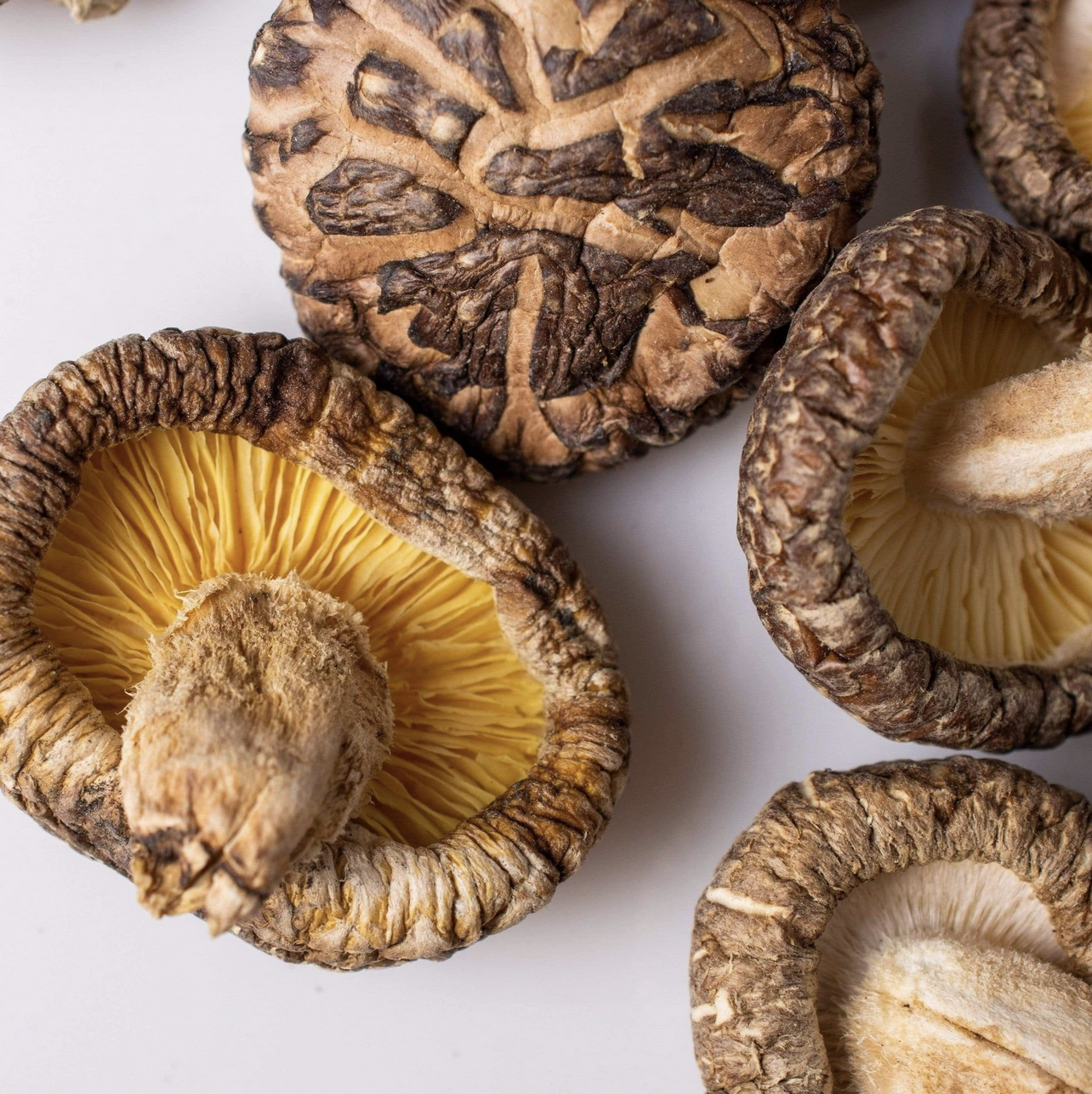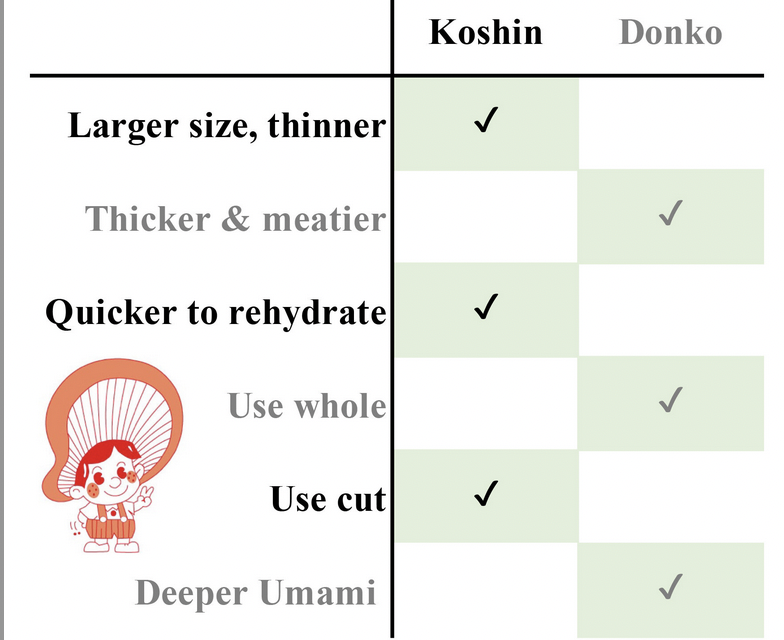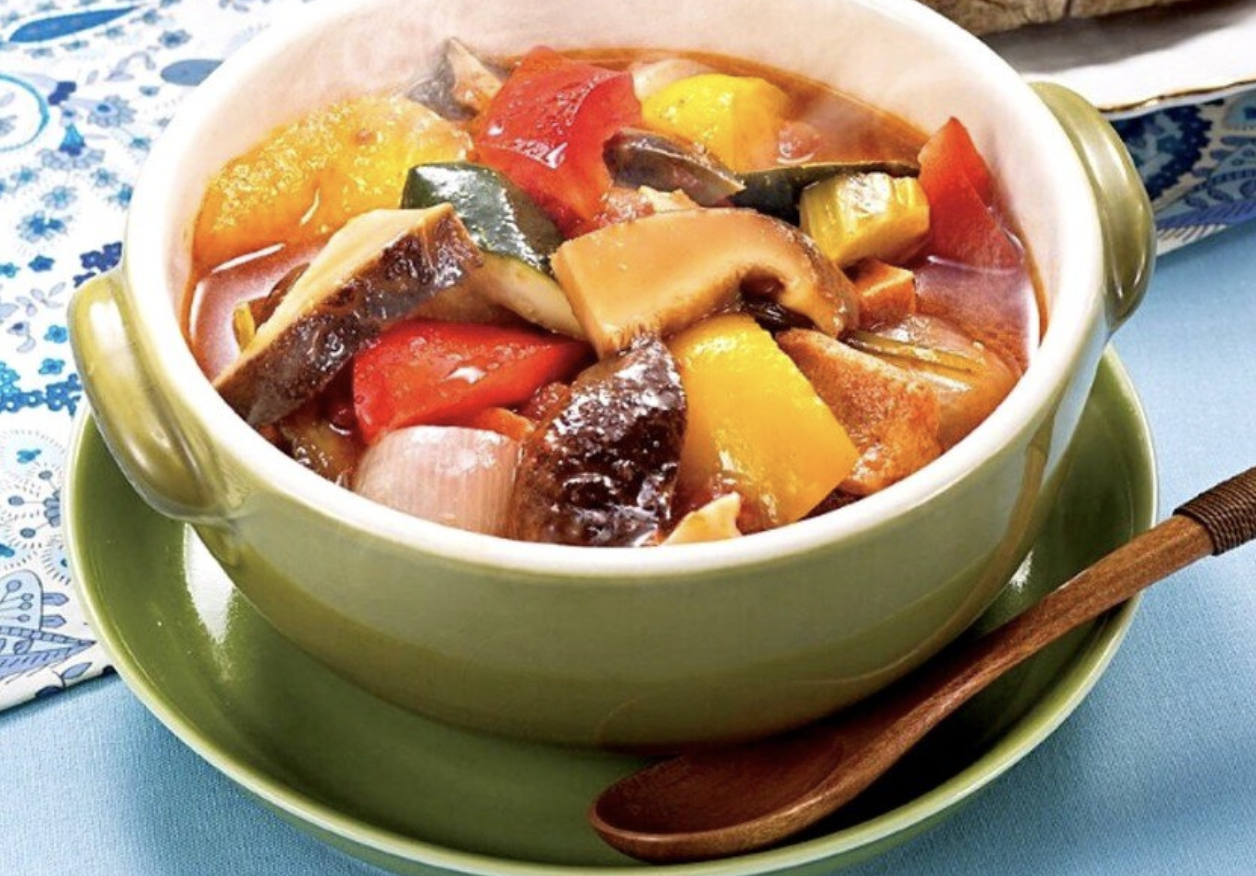Magic of Mushrooms – Sugimoto Shiitake
By Chef David
Kosher cooking leans toward traditional Jewish dishes, using recipes passed down or reminiscent of tastes from our childhood. Let me introduce you to ‘nature’s umami bomb’ the shiitake mushroom. This traditional Japanese ingredient provides the fifth taste. Yes, there are five basic tastes sweet, sour, salty, bitter, and umami sometimes referred to as savory. Each basic taste acts as an indicator of nutrients or harmful substances, umami signals protein consumption.
While umami has been a recognized taste in Japan since the early 1900s, it was only embraced by Western culture in the 1990s. Adding umami is an easy upgrade for traditional recipes, it acts as a taste enhancer elevating natural flavors. Shiitake mushrooms are a recognized source of umami flavor and Sugimoto Shiitake, certified by the OU, cultivates shiitake following old-world methods, which makes them healthier, tastier, and environmentally sustainable.
Meet The Fifth Taste – Umami
Umami translates as “pleasant savory taste”. It is commonly characterized as brothy, producing a long-lasting mouthwatering sensation. Umami’s lingering quality impacts the aftertaste of foods. The taste difference you’ll experience when eating umami-rich foods is in mouthfeel. Its influence on flavor is less powerful and more in the background than salt, or sugar, or lemons, which is why Western cultures overlooked umami for so long.
Umami is often associated with MSG although it is found in other foods. Tomatoes are one of the best plant-based sources of umami flavor, a factor contributing to the popularity of ketchup. Technically, umami is the taste of glutamate, an amino acid, and shiitake mushrooms are a great natural source.
Some chefs describe umami as adding ‘depth of flavor’. Studies are showing that using umami can reduce the need for salt by 10 – 25%. Umami stimulates appetite by triggering the secretion of saliva and digestive juices in anticipation of the consumption of protein. This makes it useful for stimulating the appetite of people with diminished taste and smell.
The Shiitake Story
Shiitake mushrooms are the second most eaten mushrooms in the world. They are grown naturally on decaying hardwood trees and may be referred to by several different names including sawtooth oak mushroom, black forest mushroom, or oakwood mushroom. In this traditional way of cultivating shiitake, referred to as the old-world method, shiitake is grown on logs in forests, a moist environment, nurtured by rain and fog. Mushrooms cultivated according to the old-world method are richer in vitamin D, and guanosine monophosphate (GMP), and have a firm texture.
Another method for cultivating shiitake is used in China to reduce production costs. Instead of using logs, they grow mushrooms on plastic bags filled with sawdust and water. The “logs” are started in China and shipped abroad, which enables the product to be labeled ‘Made in the USA’. Mushrooms grown this way are characterized as being inferior in texture and taste and have been found to contain detectable amounts of arsenic. Since these mushrooms are not cultivated in natural forests, their exposure to sunlight is limited decreasing their vitamin D content.
Traditional Production Takes Time
It takes 15 years to grow a sawtooth oak from which logs for growing shiitake can be cut. Each log lasts 5 years before being replaced. In the Sugimoto process, used logs are taken to a cultivation site, where rhinoceros beetles turn the logs into dust, creating a sustainable process. In the spring, seedlings will grow from sawtooth oak stumps, another way to preserve the environment.
Cultivating shiitake is hard work (the process is explained in this video). It takes two years from spawning until a shiitake mushroom is harvested, mushrooms sprout twice a year (in the Spring and the Fall). Sugimoto Shiitakes are cultivated without pesticides or chemicals; they are dried immediately when harvested. They use hot air drying to preserve the flavor, aroma, color, and texture. The drying process breaks the shiitake’s cell membrane, and the rehydrating produces Guanylate which adds to the umami flavor.
Sugimoto Shiitake goes one step further, using infrared to further reduce the moisture content and remove all insect/microbe content. They may be one of the only companies in the world that have received kosher certification for pesticide-free raw natural forest cultivation.
Koshin or Donko Shiitake? Sugimoto Shiitake sells two different shiitake mushrooms
Koshin shiitake is picked after the cap of the mushroom blooms into an umbrella, it is larger and flatter than the Donko shiitake and requires less time to rehydrate. Donko which is harvested at budding, is thick, with a dome-shaped cap. Donko is characterized as being thicker and meatier than the Koshin. Summarizing the difference Koshin is larger, rehydrates faster, and is used sliced. Donko is thicker with a deeper umami taste and can be used whole.
Shiitake stems tend to be woody and fibrous. Instead of discarding the stems, they can be used to make mushroom broth or can be added to soups to add flavor. Remember to remove them before eating. Alternately the stems can be ground and used as shiitake powder.
Three-Step Rehydration Process
Rehydrating makes dried shiitake four times as heavy and creates a delicious byproduct, an umami-rich broth.
Begin by washing the dried shiitake mushrooms in water to remove any remaining dust and dirt. Then place the mushrooms cap-side down in a bowl, and cover with water. (Rehydrating with cold water gives the shiitake a better flavor than using hot water.) Leave the mushrooms submerged for 5 to 10 minutes, then cut them in half removing the stem. If the mushroom is soft enough, cut the shiitake into smaller pieces (smaller pieces rehydrate faster). After an additional 20 minutes of soaking, your Koshin shiitake is ready to use in cooking.
The thicker Donko shiitake needs to be soaked longer. The best results come after soaking this mushroom in cold water for 24 hours. Wash and then submerge the mushrooms. After soaking the mushrooms for one hour, remove the stem. Place the bowl in the refrigerator for five to twenty-four hours until they are soft. By touching the stem you can determine when the mushrooms are hydrated.
Save the water the mushrooms were soaking in; it has a rich flavor which is ideal for stock. Strain the liquid, discarding any grit that settled on the bottom.
Sugimoto Shiitake
The family-owned business was established in 1954 by the grandfather of the current owners. President: Tatsunori “Tony” Sugimoto represents the third generation to lead the company. He is focused on maintaining and strengthening the thousand-year-old Japanese agriculture tradition. Sugimoto follows traditional old-world methods for growing shiitake mushrooms while using modern digital marketing to build a global network. Tony personally writes and tests all Sugimoto Shiitake recipes. His brother Kazuhide “Kazu” Sugimoto manages the day-to-day operations, sales, and community collaboration. Kazu works with local growers to promote the sustainable use of forests.
Cooking with Shiitake
With shiitake, a little can go a long way in enhancing the natural flavors of your food. I recommend beginning small, and adding a pinch of the powder to amplify the flavor of your meal. A trick when using powder, add a little water to the power, and wait 10 minutes before using it, this will increase the umami flavor. I have added shiitake to sauces, stir-fries, stews, chili, cholent, and soups. Shiitake works well in just about any vegetable dish.
Let Shiitake Become Your Special Flavor Something
Sugimoto Shiitake is grown on Japanese Sweet Sap Oak which gives them a distinctive sweet and rich flavor. I found that adding shitake powder provides a flavor burst with minimal effort, and adding mushrooms further elevates the flavor profiles, especially in vegetable medleys (see recipe for ratatouille below). I have added shiitake caps to ramen dishes for an authentic dish and made glazed shiitake (recipe below) to fully showcase their savory taste and complex texture. Sugimoto Shiitake can be ordered online from retailers listed on the Sugimoto website.
Let the umami from shiitake enrich the natural flavors of your dishes, you will be glad you did.
Recipe: Ratatouille (adapted from Sugimoto Shiitake)
Sautee and stew vegetables make this simple ratatouille with a rich natural umami taste that makes it a fantastic side dish.
Ingredients:
- 4 dried shiitake mushrooms
- 1 zucchini
- 1 eggplant
- 1 onion
- 1 red bell pepper
- 1 celery stalk
- 1 can tomatoes about 14 oz
- 2 tablespoons tomato paste
- 2-3 cloves garlic (finely chopped)
- ¼ cup white wine
- ¼ cup shiitake broth
- 2 bay leaves (optional)
- 1 pinch of black pepper
- 1 tsp salt
- 1 pinch of thyme
- Basil (to taste)
Method:
- Reconstitute shiitake mushrooms
- Cut shiitake mushrooms, zucchini, eggplant, onion, and bell pepper
- Heat olive oil over a low flame. Fry onion and garlic until fragrant and translucent
- Add cut vegetables to garlic and onions. Cook gently over medium heat until soft
- Add salt, pepper, canned tomatoes and tomato paste, wine and broth, bay leaf, and thyme.
- Cook on low flame for 20 minutes in a covered pot.
- When glistening, remove it from the heat
- Serve over rice garnish with basil
Glazed Shiitake
For a more traditional recipe, try glazed shiitake served over rice (adapted from the New York Times) – I modified the recipe by adding zucchini to the stir-fry for color and flavor.
Ingredients:
- 3 tablespoons vegetable oil
- 1/4 teaspoon crushed red pepper (using less will reduce the heat)
- 6-12 shiitake mushrooms with stems removed
- Salt and pepper (to taste)
- 4 garlic cloves, minced
- 1 tablespoon grated ginger
- 1 tablespoon sugar
- 1 teaspoon sesame oil
- 3 tablespoons soy sauce
- 6 scallions, for garnish (optional)
- 1 tablespoon toasted sesame seeds for garnish (optional)
Method:
- Reconstitute shiitake mushrooms
- Put a large wok or skillet over high heat. Add oil and heat until hot, then add red pepper and shiitake caps, stirring to coat. Season lightly with salt and pepper or to taste. Fry for 2 minutes.
- Reduce heat slightly and add garlic, ginger, sugar, sesame oil, and soy sauce.
- Fry for 1 additional minute.
- Serve over rice if desired. Garnish with scallions and sesame seeds
This dish can also be made with tofu. Before using, press the tofu to remove the water.









